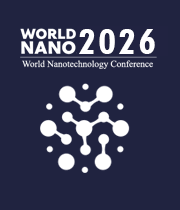Title : Nanostructured optoelectronics
Abstract:
The use of nanostructure materials for optoelectronic devices, including light-emitting diodes (LEDs), laser diodes, photodetectors, and solar cells, has recently attracted considerable attention due to their unique geometry. Nanostructures in small dimensions can be perfectly integrated into a variety of technological platforms, offering novel physical and chemical properties for the high performance optoelectronic devices. The exploitation of new nanostructures and their optical and electrical properties is necessary for their emerging practical device applications.
This special issue contains six papers, presenting some recent advances in the theoretical calculation, synthesis, characterization, and application of such novel nanostructures.
Recently, natural dyes have been widely studied as potential sensitizers for dye-sensitized solar cells (DSSCs) due to their cost efficiency, nontoxicity, and complete biodegradation. In “Photoactive Layer of DSSCs Based on Natural Dyes: A Study of Experiment and Theory,” Y. Li et al. investigated, both theoretically and experimentally, three natural dyes for DSSCs which were extracted from natural plants, including Forsythia suspensa, Herba Violae, and Corn leaf. The authors reported that such natural dyes exhibit wide absorption region which covers almost the whole visible spectrum. The highest photoelectronic conversion efficiency for these natural dyes was recorded to be 0.96% with open circuit voltage of 0.66 V and short circuit current density of 1.97 mAcm−2 which is promising for future biophotovoltaics applications.



